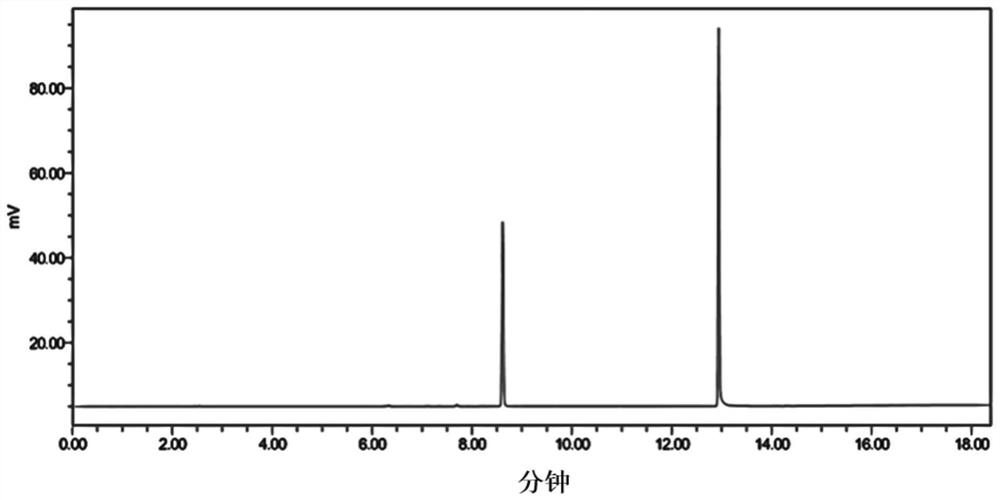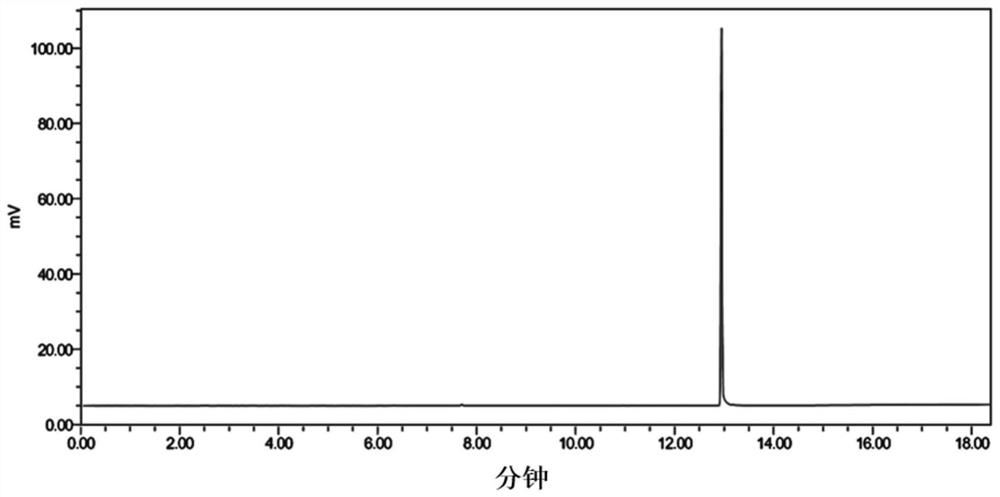Method for detecting residual solvents in pantoprazole sodium sesquihydrate
A technology of sesquihydrate and pantoprazole sodium is applied in the field of detection of residual solvent in pantoprazole sodium sesquihydrate, and can solve problems such as limited types of residual solvents and the like
- Summary
- Abstract
- Description
- Claims
- Application Information
AI Technical Summary
Problems solved by technology
Method used
Image
Examples
Embodiment 1
[0056] (1) prepare need testing solution: get pantoprazole sodium sesquihydrate 0.5g, accurately weighed, put in the headspace bottle, add solvent [dimethylsulfoxide-water (80-20)] 5ml and make it dissolve , Sealed, that is, the test solution.
[0057] (2) Preparation of reference solution: Accurately weigh 300mg of methanol, 60mg of dichloromethane, 500mg of ethanol, and 41mg of acetonitrile, place them in a 100ml measuring bottle with 10ml of solvent, add solvent to dilute to the mark, and shake well to obtain the first reserve solution; accurately weigh 40 mg of benzene and place it in a 100 ml measuring bottle with 10 ml of solvent, add solvent to dilute to the mark, and shake well to obtain the benzene intermediate stock solution; then precisely pipette 0.5 ml of benzene intermediate stock solution and place it in the existing 2 -In a 100ml measuring bottle with 5ml of solvent, add solvent to dilute to the mark, and shake well to obtain the second stock solution; precisel...
Embodiment 2
[0085] Limit of detection and limit of quantification: The limit of detection (LOD) and limit of quantitation (LOQ) are determined according to the signal-to-noise ratio method. The tested signal is compared with the baseline noise, and the lowest concentration or percentage that can be reliably detected is calculated. Dilute each residual solvent stock solution of known concentration to a low concentration and measure according to the law, requiring detection limit signal-to-noise ratio S / N≥3; quantification limit signal-to-noise ratio S / N≥10, and connected to 6 needles of LOQ solution peak area RSD≤15%.
[0086] Solution preparation
[0087] Blank solution: accurately pipette 5ml of diluent, put it in a headspace bottle, seal it, and get it.
[0088] Quantitative limit solution: Precisely pipette 0.2ml of methanol positioning solution, 0.2ml of dichloromethane positioning solution, 0.125ml of ethanol positioning solution, 0.5ml of acetonitrile positioning solution, 2.5ml of...
Embodiment 3
[0097] Linearity: From the limit of quantification to 150% concentration of each residual solvent limit, uniformly select 6 concentration levels to prepare the solution, measure according to the law, take the main peak concentration as the abscissa, and take the peak area as the ordinate, fit the curve and perform linear regression Y=aX+b, requiring correlation coefficient r≥0.99; Y-axis intercept / limit concentration peak area should be ≤25%.
[0098] Solution preparation
[0099] Blank solution: Accurately pipette 5ml of diluent and put it in a headspace bottle, seal it, and get it.
[0100] Methanol positioning solution: Accurately weigh 304.0mg of methanol, put it in a 100ml measuring bottle with 10ml of diluent, add diluent to make up to the mark, shake well, and it is marked as ID-MeOH.
[0101] Dichloromethane positioning solution: Accurately weigh 62.1mg of dichloromethane, put it in a 100ml measuring bottle with 10ml of diluent, add diluent to make up to the mark, sha...
PUM
 Login to View More
Login to View More Abstract
Description
Claims
Application Information
 Login to View More
Login to View More - R&D Engineer
- R&D Manager
- IP Professional
- Industry Leading Data Capabilities
- Powerful AI technology
- Patent DNA Extraction
Browse by: Latest US Patents, China's latest patents, Technical Efficacy Thesaurus, Application Domain, Technology Topic, Popular Technical Reports.
© 2024 PatSnap. All rights reserved.Legal|Privacy policy|Modern Slavery Act Transparency Statement|Sitemap|About US| Contact US: help@patsnap.com










